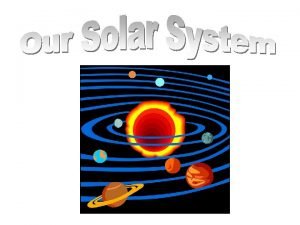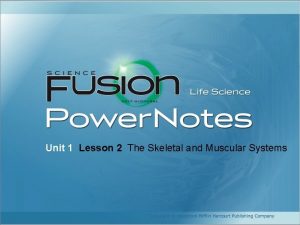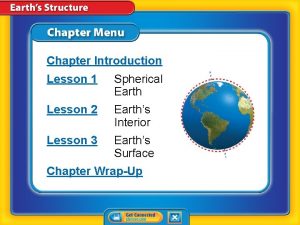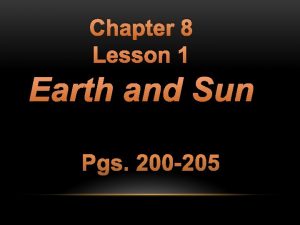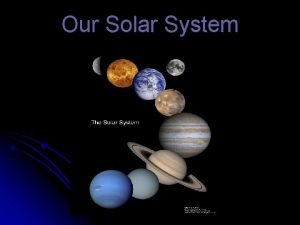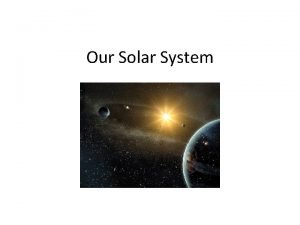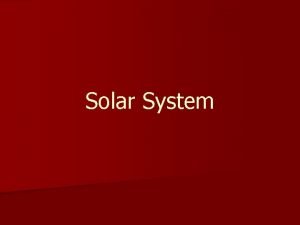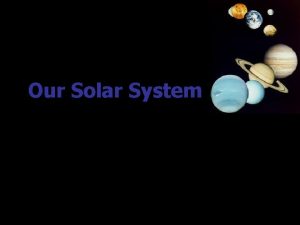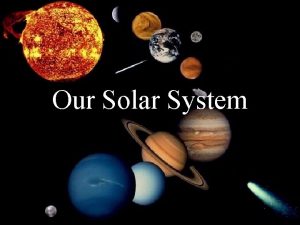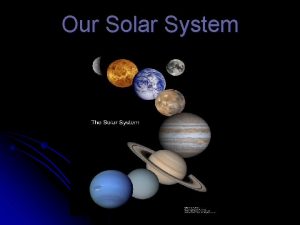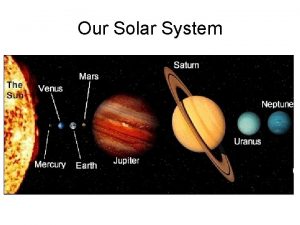Space Lesson 1 Space and the Solar System










- Slides: 10

Space Lesson 1: Space and the Solar System

Learning Objective • To explore space and the Solar System. Success Criteria • To identify the planets in our Solar System. • To describe a planet in our Solar System. • To create a scale model of the Solar System using a scale.

Starter: Rate Your Knowledge There are 5 statements below. For each question, say whether you think the statement is True or False. 1. The Earth is at the centre of the Solar System. False – the Sun is at the centre of the Solar System. 2. A light year is the distance that light travels in one year. True 3. Stars leave the sky during the daytime. False – during the day when the Earth is facing the Sun, we cannot see the stars because of how bright the Sun is. 4. The Moon emits light. False – the moon is a non-luminous object and reflects the light from the Sun. 5. All stars are the same size. False – the stars range in size. The biggest known star has a radius of 987 000 km. The smallest known star has a radius of 167 000 km.

Day and Night The Earth is tilted and spins on an invisible line called an axis. Only half of planet Earth faces the Sun at any one time. The side facing the Sun is in daytime. The side facing away from the Sun is in darkness and so it is night time. It takes 24 hours for the Earth to rotate once on its axis. If it is night time in New Zealand, what will it be in England? It will be daytime as England is on the opposite side of the world to New Zealand will be facing the Sun.

The Planets In our Solar System, there are 8 planets. Can you remember the order of the planets? Mercury, Venus, Earth, Mars, Jupiter, Saturn, Uranus, Neptune A mnemonic is a way of remembering something. We can make a sentence out of the first letter of each word in a sequence to help us remember it. For example, we can remember how to spell ‘because’ by remembering the mnemonic: Big Elephants Can Always Understand Small Elephants. With your partner, create your own mnemonic to help you remember the order of the planets.

Our Solar System In our Solar System, there are 8 planets. What other objects might we find in space? With your partner, you have one minute to write a list of as many objects you can think of that you may find in space. • • • man made satellites – Satellites made by man and sent into space to carry out a function. natural satellite – The Moon is a natural satellite. It orbits Earth. asteroids comets dust dwarf planets

Modelling The Solar System What is a scale model? A scale model is a copy of something that is much larger or smaller than the object itself but one which maintains the original’s proportions. For example, a toy car which has been made to scale to represent a real life car. It is possible to create a human scale model of the Solar System. Using the information on the Planet Fact Cards and working in groups, calculate each planet’s scaled diameter and distance from the Sun. Round your answers to one decimal place.

Modelling The Solar System Answers Mercury Diameter: 4900 ÷ 2000 = 2. 5 cm Distance: 58 000 ÷ 200 000 = 0. 29 m Venus Diameter: 12000 ÷ 2000 = 6. 0 cm Distance: 110 000 ÷ 200 000 = 0. 6 m Earth Diameter: 12 700 ÷ 2000 = 6. 4 cm Distance: 150 000 ÷ 200 000 = 0. 8 m Mars Diameter: 6800 ÷ 2000 = 3. 4 cm Distance: 230 000 ÷ 200 000 = 1. 2 m Jupiter Diameter: 140 000 ÷ 2000 = 70. 0 cm Distance: 780 000 ÷ 200 000 = 3. 9 m Saturn Diameter: 120 000 ÷ 2000 = 60. 0 cm Distance: 1400 000 ÷ 200 000 = 7. 0 m Uranus Diameter: 51 000 ÷ 2000 = 25. 5 cm Distance: 2900 000 ÷ 200 000 = 14. 5 m Neptune Diameter: 49 000 ÷ 2000 = 24. 5 cm Distance: 4500 000 ÷ 200 000 = 22. 5 m

Planet Postcard Imagine that you have taken a much-needed holiday to another planet. Using the Planet Fact Cards, write a postcard back to your family or friends on Earth describing the planet and the activities that you took part in. Try to use as many facts as you can about your chosen planet.

